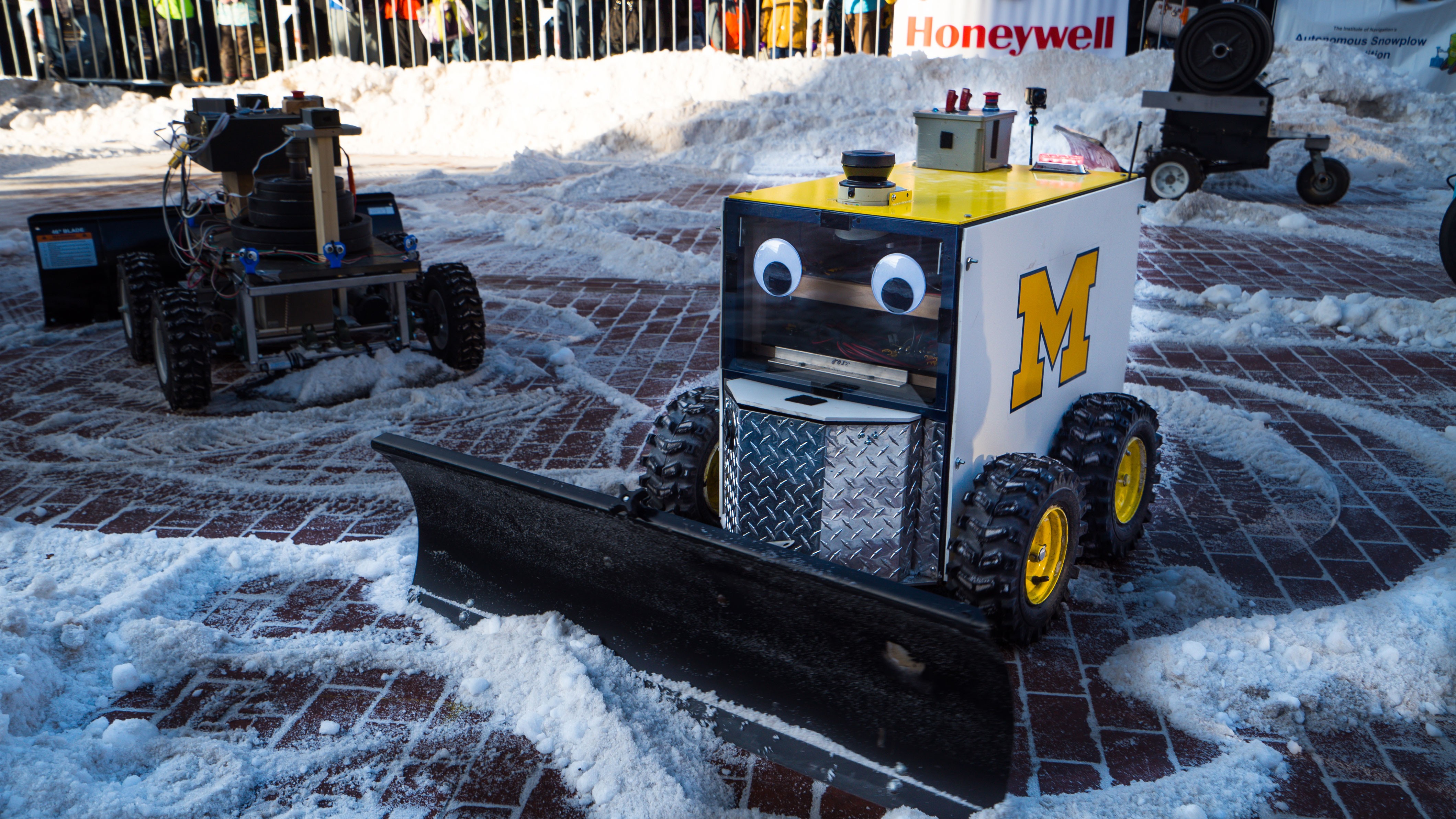Image: Pixabay
In February of 2018—an era of untold vehicular and scientific innovations—why is it that I still have to put crampons over my boots to leave the house?For those of you who have never had the pleasure of breaking your ass on an icy sidewalk, please allow me to elaborate: Crampons are studded rubber thingamajigs you strap on over shoes so that you can navigate snow and ice more safely.I really shouldn’t need these to get around in a city’s downtown area. I mean, shouldn’t we have heated sidewalks and roads by now? We don’t need an expensive solar-tile road to do it, although that would be cool. Iceland’s got a nifty geothermal snowmelt system that uses hot water to melt snow and ice on Reykjavik streets. The city of Holland, Michigan has a snowmelt system too. Sure, it would require digging up streets and putting in tubing to circulate hot water—but places with snowmelt systems still generally save a ton of money every year.Yet for some reason, most of us North Americans seem strangely committed to collectively spending billions on snow removal every year. Some individual storms, like early January’s bomb cyclone, cost cities millions to clean up. In New York City, it costs about $1.8 million per inch to clear the white stuff away. Montreal’s snow-removal budget for 2017 was $158 million. Meanwhile, Ottawa chronically lowballs its budget and usually busts through it before the winter’s over. Most cities do. These costs include equipment, maintenance, fuel, salt, and the most expensive part: labor.But these recurring expenses are just a fraction of the true cost of snow removal.Road salt damages infrastructure, causing costly and recurring repairs. So do plows scraping the pavement. The resulting potholes are expensive for cities to fix, and AAA estimates pothole-related car damage costs US drivers more than $3 billion a year.It should be noted that in its 2017 Infrastructure Report Card, the American Society of Civil Engineers said the US currently needs $836 billion to fix and update its highways and bridges, with $420 billion of that for repairing existing highways. Of course, snow removal didn’t cause all the damage, but considering 70 percent of US roads cut through these snowy areas, it likely hasn’t helped.Also, P.S., road salt is terrible for the environment and so are diesel-powered plows, which cough lots of greenhouse gases into the atmosphere. Check out this paper from researchers at Iowa State University for a deep dive into the CO2 footprint of heated pavement versus traditional snow removal. Spoiler: Heated pavement is better, even when heating systems are powered by coal.Heated pavement, and especially sidewalks, make sense from every angle—but especially the economic one. "I am sure that in several ways we have saved money because snow plowing is bad for the streets. So we are saving on renovations of the streets and we are saving on snow plowing and we are saving on accidents to people,” Eirikur Hjalmarsson of Iceland’s Reykjavik Energy told CBC a few years ago.Amy Sasamoto, downtown development officer for the city of Holland, Michigan told Motherboard in an email that it originally cost it $1.1 million ($2.3 million in today’s dollars) to build its snowmelt system back in 1988. Until recently it used waste heat from a local coal-fired power plant to warm five miles of sidewalks and the city’s main shopping street; it converted to natural-gas heat when the coal-fired plant was marked for decommissioning in 2016. Last year the city spent about $268,000 to maintain the system.On its website, Holland brags about snowmelt: “Added benefits include: No salting, no plowing, no slipping or sliding.”Sounds good to us. BRB moving to Holland.Get six of our favorite Motherboard stories every day by signing up for our newsletter .
Some individual storms, like early January’s bomb cyclone, cost cities millions to clean up. In New York City, it costs about $1.8 million per inch to clear the white stuff away. Montreal’s snow-removal budget for 2017 was $158 million. Meanwhile, Ottawa chronically lowballs its budget and usually busts through it before the winter’s over. Most cities do. These costs include equipment, maintenance, fuel, salt, and the most expensive part: labor.But these recurring expenses are just a fraction of the true cost of snow removal.Road salt damages infrastructure, causing costly and recurring repairs. So do plows scraping the pavement. The resulting potholes are expensive for cities to fix, and AAA estimates pothole-related car damage costs US drivers more than $3 billion a year.It should be noted that in its 2017 Infrastructure Report Card, the American Society of Civil Engineers said the US currently needs $836 billion to fix and update its highways and bridges, with $420 billion of that for repairing existing highways. Of course, snow removal didn’t cause all the damage, but considering 70 percent of US roads cut through these snowy areas, it likely hasn’t helped.Also, P.S., road salt is terrible for the environment and so are diesel-powered plows, which cough lots of greenhouse gases into the atmosphere. Check out this paper from researchers at Iowa State University for a deep dive into the CO2 footprint of heated pavement versus traditional snow removal. Spoiler: Heated pavement is better, even when heating systems are powered by coal.Heated pavement, and especially sidewalks, make sense from every angle—but especially the economic one. "I am sure that in several ways we have saved money because snow plowing is bad for the streets. So we are saving on renovations of the streets and we are saving on snow plowing and we are saving on accidents to people,” Eirikur Hjalmarsson of Iceland’s Reykjavik Energy told CBC a few years ago.Amy Sasamoto, downtown development officer for the city of Holland, Michigan told Motherboard in an email that it originally cost it $1.1 million ($2.3 million in today’s dollars) to build its snowmelt system back in 1988. Until recently it used waste heat from a local coal-fired power plant to warm five miles of sidewalks and the city’s main shopping street; it converted to natural-gas heat when the coal-fired plant was marked for decommissioning in 2016. Last year the city spent about $268,000 to maintain the system.On its website, Holland brags about snowmelt: “Added benefits include: No salting, no plowing, no slipping or sliding.”Sounds good to us. BRB moving to Holland.Get six of our favorite Motherboard stories every day by signing up for our newsletter .
Advertisement

These figures say nothing of the cost of weather-related car crashes or environmental damage caused by snow removal. In an exhaustive report from 2015, the US’s National Highway Traffic Safety Administration estimated that, “When quality of life valuations are considered, the total value of societal harm from motor vehicle crashes in 2010 was $836 billion.” It also pegged the cost of fuel consumption and greenhouse gas emissions during crash-related traffic congestion at $28 billion.Read More: Road Salt is Turning North America's Freshwater Lakes into Saltwater
Advertisement
